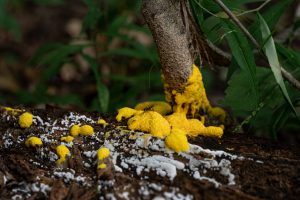
So you’ve decided to call someone to help with the trees on your property, but you don’t have a recommended tree company to use. Each company will pitch a wide range of recommendations for what you could do with your trees, but if you haven’t consulted with an arborist, you have not done your due diligence. Without proper information about your tree, clear and descriptive options, and an educated recommendation to make a proper decision, you could end up needlessly cutting down that tree your grandfather planted.
Becoming a certified arborist involves many years working in the tree care industry, learning a set of tree care standards, hours of study, and finally taking and passing the ISA Certifed Arborist exam. To maintain your certification, you are required to attend continuing education classes every year to keep up-to-date on the latest arboricultural practices. The tree care industry is a rapidly-changing industry, and it’s not always easy to know what the current advances are. This is the life of both a tree guy and an arborist. And while a tree guy is the caterpillar that is borne from the sawdust of learning such a complex trade, an arborist is a butterfly that emerges from a tree guy’s credentialed chrysalis.

It’s not always a question you might ask, but you might want to know how the crew plans to access the tree. If you’re not careful, a tree guy could leave small holes from the bottom of your tree to the top because they wore spikes or gaffs to climb your tree; a practice that is okay for removing a tree, but not a tool to use when pruning trees. It punctures the cambium of your tree, damaging the live tissue and leaving an open wound that is vulnerable to pests, disease, and fungus. An arborist is able to surpass this problem by using ropes in the upper canopy, and can also set up a cambium saver in the tree to eliminate the friction burn from the rope. No harm, no foul.
Damage to your tree’s health could get worse if a tree guy suggests “topping” a tree, an old practice that is still done today. A homeowner might just be looking for some safety in reducing a very large and mature tree, but what they’ve asked for is quite the opposite. A topped tree now has decay at every cut, with new growth that is weaker and more susceptible to breaking out. An arborist might suggest end-weight reduction on a section of the tree over the roof, or addressing specific limbs of concern with less invasive cuts. These options keep the tree healthy while still meeting the initial goal.
Information about spots, defects, and rot is important to note and consider when weighing the options for how to proceed with your trees, especially if a tree guy accidentally misidentifies something growing at the base of your tree. There are lots of fungi that grow in different parts of the tree, which would give your estimator a clue as to what is happening to your tree. I’ve had a lot of calls about what turns out to be slime molds, which are mostly just eating the sugars from the sap – an indication of nearly zero concern. However, if you had something called Kretzschmaria or “Brittle Cinder Fungus,” you could have a much more dire situation. If gone unnoticed or misidentified, your tree could fall from root decay, and this, unfortunately, happens when you are not prepared – and the outcomes have been deadly.

It might make sense to decide to choose a tree guy because of a low price. But having a knowledgeable arborist come out for a free estimate could turn into saving your tree and saving money in the long run. Honesty is not always the problem with selecting a tree company for your service; it just comes down to the information you have to work with when caring for your trees. Once you know what you are dealing with, how the work will be performed, and what options you have, you can make a clear decision on how to proceed with the work. Getting a few estimates from different companies always helps, just try to make a certified arborist one of those calls.


